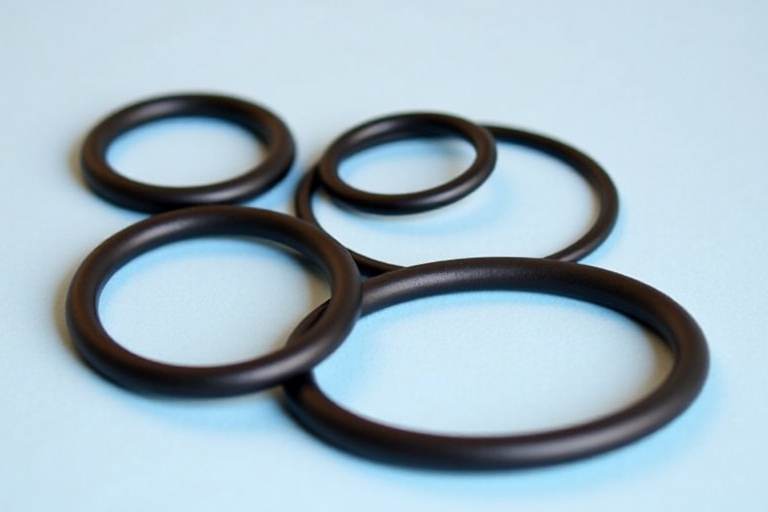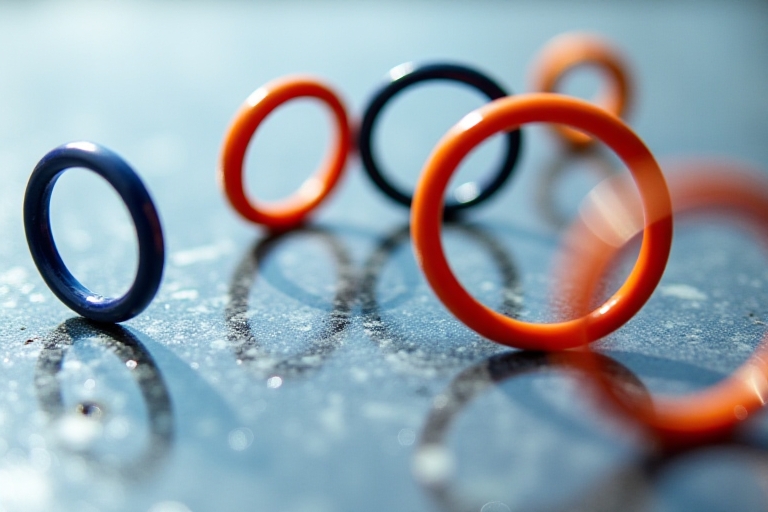
An O-ring is a critical component in many mechanical systems, designed to create a seal between two mating surfaces. It works by being compressed between these surfaces, deforming to fill any irregularities and prevent the passage of liquids or gases. The key to its effectiveness lies in its material properties and the proper design of the groove in which it is installed. When an O-ring is placed in a groove and the two surfaces are brought together, the O-ring is squeezed, creating a tight seal. This compression ensures that there are no gaps through which fluids or gases can escape. The O-ring's ability to return to its original shape after the pressure is released is crucial for its reusability in dynamic applications, such as in reciprocating or rotating machinery. The effectiveness of an O-ring also depends on the correct choice of material, which must be compatible with the operating environment, including temperature, pressure, and the type of fluid or gas it will be sealing.
An O-ring is a toroidal (doughnut-shaped) seal made from various materials, most commonly elastomers such as rubber. It is used to prevent leakage between two or more parts by creating a tight seal when compressed. O-rings are versatile and can be used in both static and dynamic applications, making them indispensable in numerous industries. The design of an O-ring is simple yet effective. Its circular cross-section allows it to be easily compressed and to conform to the surfaces it seals against. This design also enables it to handle a wide range of pressures and temperatures, depending on the material used.
Using O-ring seals correctly is essential for ensuring a leak-free system. Here are some key steps and considerations:
Selection:
Choose the right size: The O-ring must fit properly in the groove. It should be neither too tight, which could cause excessive friction or damage, nor too loose, which could lead to leakage.
Select the appropriate material: Consider the chemical compatibility, temperature range, and pressure requirements of the application.
Installation:
Cleanliness: Ensure that the groove and mating surfaces are clean and free of debris, which could damage the O-ring or prevent a proper seal.
Lubrication: Use a suitable lubricant to reduce friction during installation and operation, especially in dynamic applications.
Avoid twisting or stretching: Handle the O-ring carefully to prevent damage. It should be installed without twisting or stretching, which could compromise its sealing ability.
Maintenance:
Regular inspection: Check O-rings for signs of wear, such as cracks, cuts, or deformation, and replace them as necessary.
Proper storage: Store O-rings in a cool, dry place away from direct sunlight and chemicals that could degrade the material.
While O-rings are relatively simple components, improper use can lead to seal failure. Here are some common mistakes to avoid:
Incorrect Sizing: Using an O-ring that is too small or too large for the groove can lead to inadequate sealing or excessive wear.
Wrong Material Selection: Choosing a material that is not compatible with the operating environment can result in degradation or failure of the O-ring.
Improper Installation: Twisting, stretching, or contaminating the O-ring during installation can compromise its integrity.
Neglecting Maintenance: Failing to regularly inspect and replace worn O-rings can lead to leaks and system failures.
By being aware of these pitfalls, users can ensure the longevity and effectiveness of their O-ring seals.

O-rings are available in a wide variety of materials, each with specific properties that make them suitable for different applications. Some common materials include:
| Material | Properties | Common Applications |
| NBR (Nitrile Butadiene Rubber) | Good resistance to oils and fuels, limited in high-temperature applications | General industrial use, automotive |
| Viton (FKM - Fluoroelastomer) | Excellent chemical resistance and high-temperature tolerance | Chemical processing, aerospace |
| Silicone | Exceptional flexibility, temperature resistance from low to moderate | Food and medical industries |
| EPDM (Ethylene Propylene Diene Monomer) | Resistant to steam, water, and alkalis | Automotive, HVAC systems |
| PTFE (Polytetrafluoroethylene) | Superior chemical resistance, used in extreme temperatures, less elastic | Extreme temperature applications |
| HNBR (Hydrogenated Nitrile Butadiene Rubber) | High-performance, resistant to heat, chemicals, and abrasion | Extreme environments, oil and gas |
The choice of material is critical and depends on the specific requirements of the application, including the type of fluid or gas, operating temperature, and pressure.
Gangwei is a leading manufacturer of rubber sealing products in China, specializing in O-rings, shock absorbers, cushions, rubber seals, and assorted rubber parts. With over 10 years of experience, Gangwei has built a reputation for quality and reliability, serving industries such as automobiles, motorcycles, construction machinery, elevators, electronics, and communication equipment.
Wide Material Selection: Gangwei provides O-rings in numerous materials, including NBR, Viton, Silicone, EPDM, PTFE, and HNBR, catering to different application requirements.
Customization: We offer custom sizes and shapes to fit specific customer needs, ensuring a perfect seal in any application.
Quality Assurance: With stringent quality control measures, Gangwei ensures that their O-rings meet or exceed industry standards.
Technical Support: Our experts can provide guidance on material selection, sizing, and application-specific solutions.
High-Performance HNBR O-rings: Gangwei's HNBR O-rings are engineered for extreme environments, offering superior resistance to heat, chemicals, and abrasion, making them ideal for demanding applications.
By choosing O-rings from Gangwei, customers can benefit from enhanced performance, reduced downtime, and increased efficiency in their operations. Contact us today and get customized solutions!

